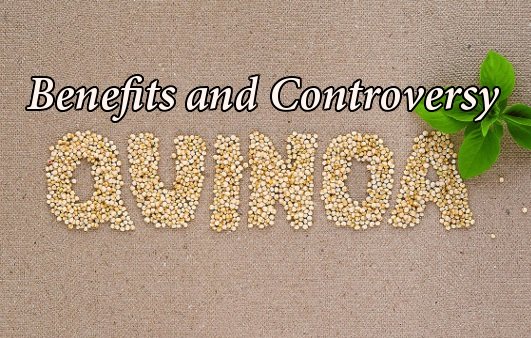Quinoa: The Benefits and the Controversy

 It’s heralded as a superfood and an “ancient grain”. Quinoa is both—providing complete protein in the form of a whole grain that was first harvested some over 5000 years ago. But quinoa, like everything these days, has been surrounded by controversy as of late. So, what are the benefits of quinoa and where is this controversy coming from?
It’s heralded as a superfood and an “ancient grain”. Quinoa is both—providing complete protein in the form of a whole grain that was first harvested some over 5000 years ago. But quinoa, like everything these days, has been surrounded by controversy as of late. So, what are the benefits of quinoa and where is this controversy coming from?
Ten years ago, you would have been hard-up to find quinoa at a health food store in the U.S., let alone a regular grocery store. But now the food is available everywhere—nearly all stores and restaurants. It’s hot. And its reported health benefits are a big part of that.
As MedicalNewsToday reports, the “pseudo-cereal” is not botanically classified as a grain. However, it is classified as a whole grain for nutritional purposes. It’s gluten-free and is a great source of iron, magnesium, B-vitamins, phosphorus, potassium, calcium, fiber, and vitamin E.
Perhaps the best part about it is that it is one of only a handful of plants that are considered a complete protein, with all essential amino acids. For this reason, it’s wildly popular among vegetarians and vegans.
As far as gluten-free options go, quinoa is one of the best. When compared with gluten-free products and foods that are commonly made with corn, rice, and potato flour, quinoa is loaded with antioxidants, making it a good choice for those with gluten-sensitivity or Celiac disease.
But with its booming popularity, quinoa has caused some problems, namely in the regions where it originates.
Quinoa Controversy
Quinoa comes to us from the ancient Incans, who called the plant the “mother of all grains”. Now, it’s largely cultivated by Bolivian farmers, those who both eat and sell their prized grain. The increased demand hasn’t only meant increased profits for these farmers, as they’ve begun selling and relocating native llamas to make more room for quinoa. This is bad for the llamas, and as Vegetarian Times reports, “bad news for the soil” that’s enriched with the llama manure.
Bolivian farmers are also being pushed to produce on massive scales, sacrificing sustainability and creating a monoculture. Though there are nearly 3,000 different types of quinoa, the most common strain, Royal Quinoa in black, red, and golden, accounts for over 95% of Bolivian crops.
Does this mean you need to give up quinoa for the sake of our planet and the farmers? Not necessarily. The boon for quinoa has done many great things—providing better profits for farmers, incorporating the grain into nutrition packets for pregnant Bolivians, and making it a part of a healthier school meal program in Peru. But we can’t ignore the environmental effects.
Do your part by purchasing fair trade quinoa whenever possible. Alter Eco Foods and La Yapa Organics both provide this option.

Tried it , no taste what so ever , you would have to add it to something or it would be like eating sawdust